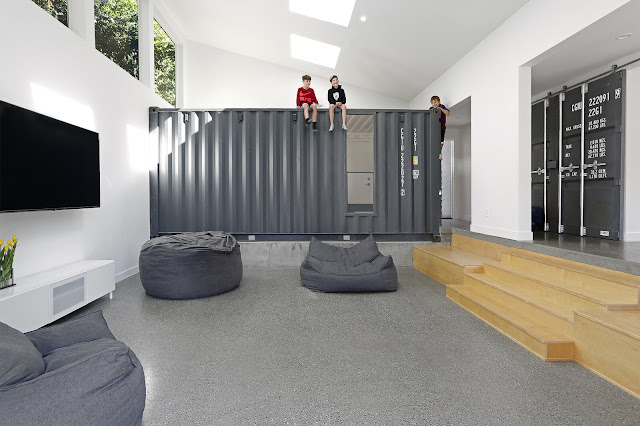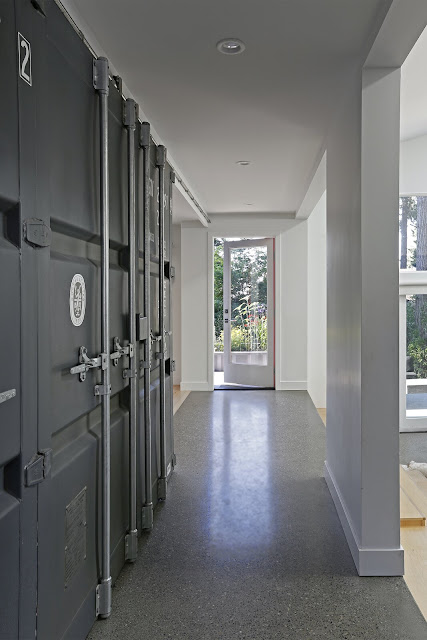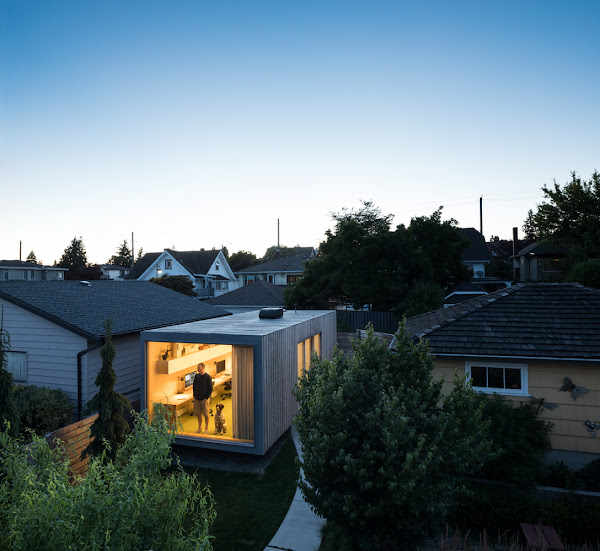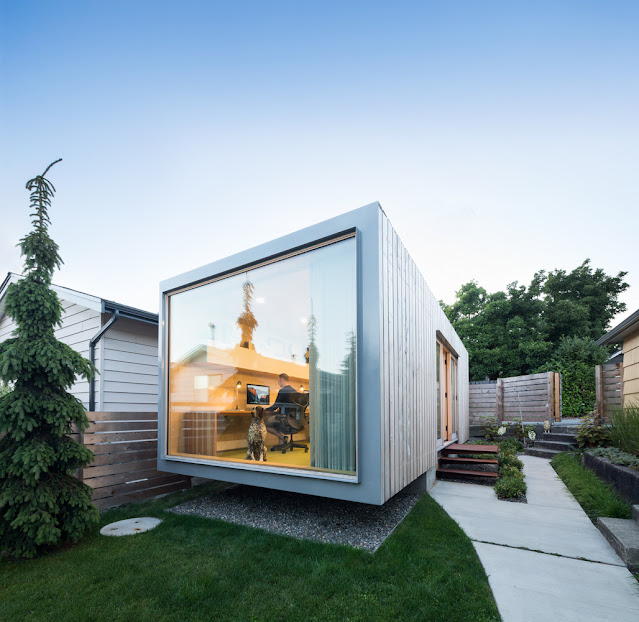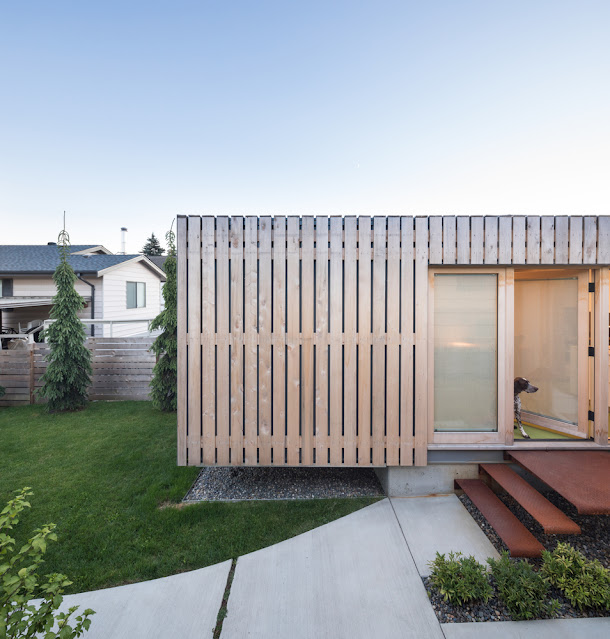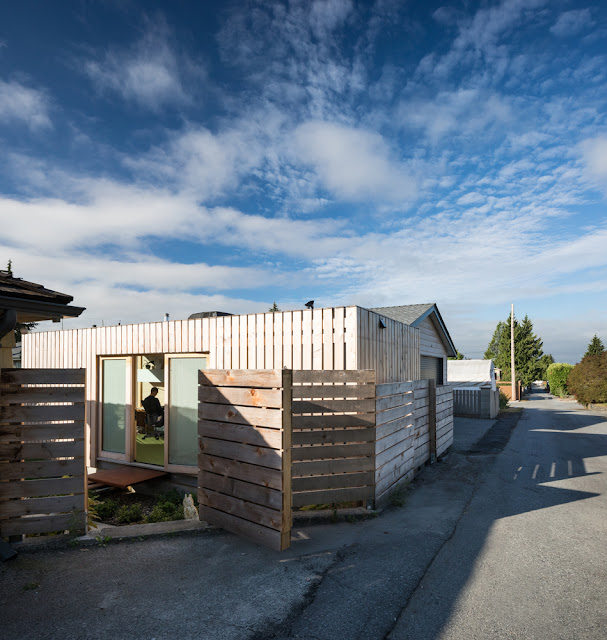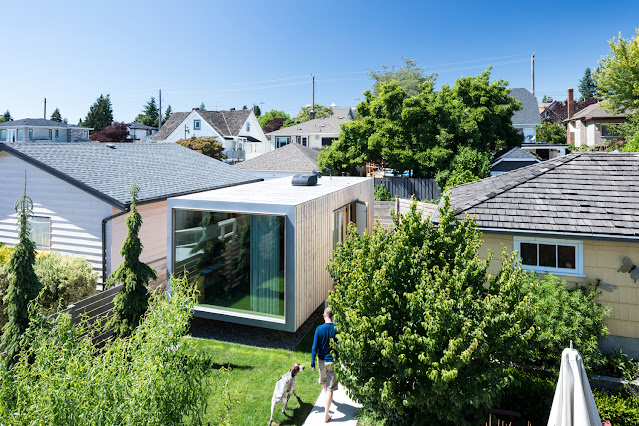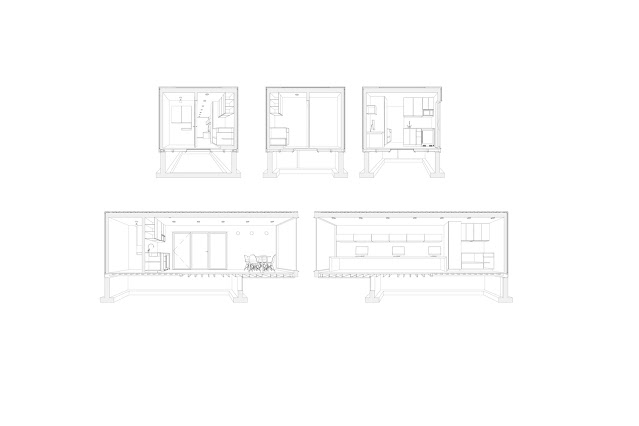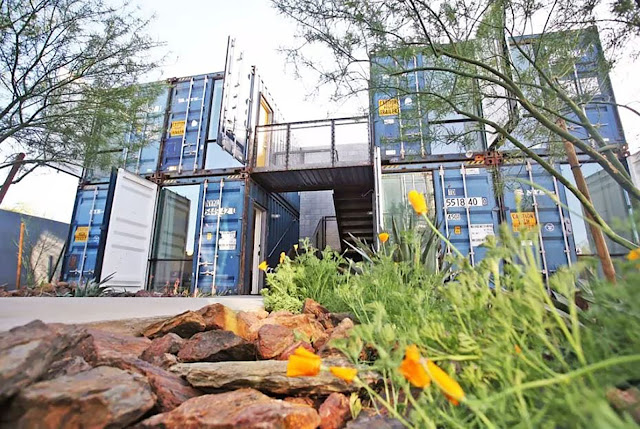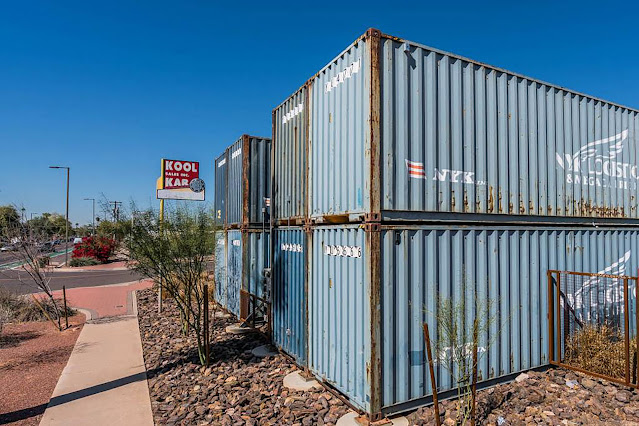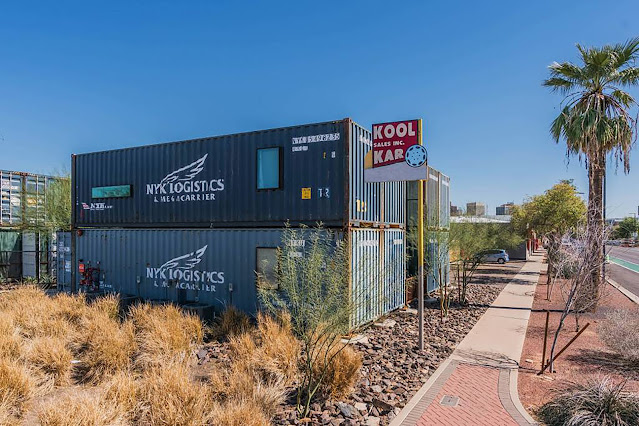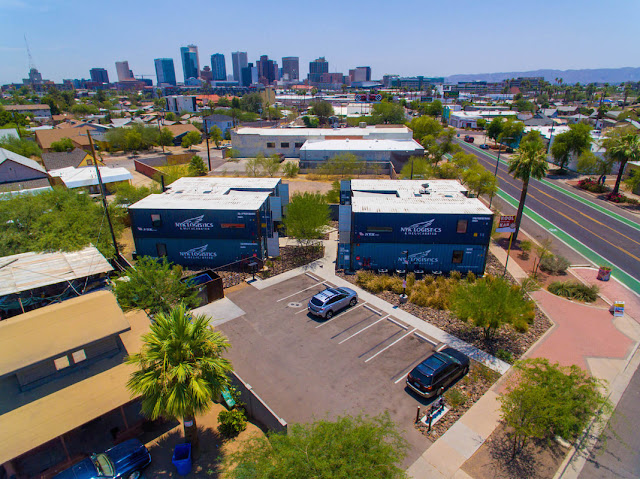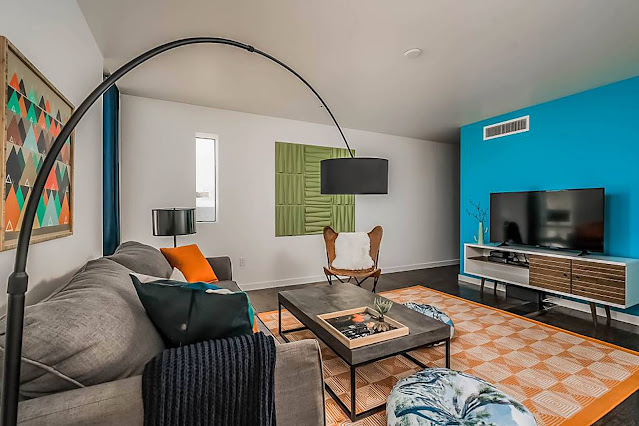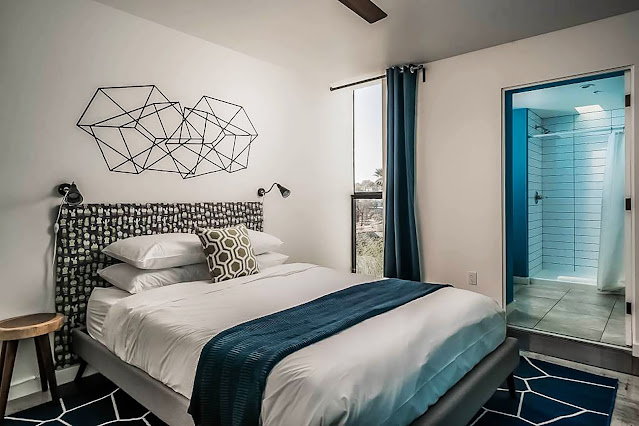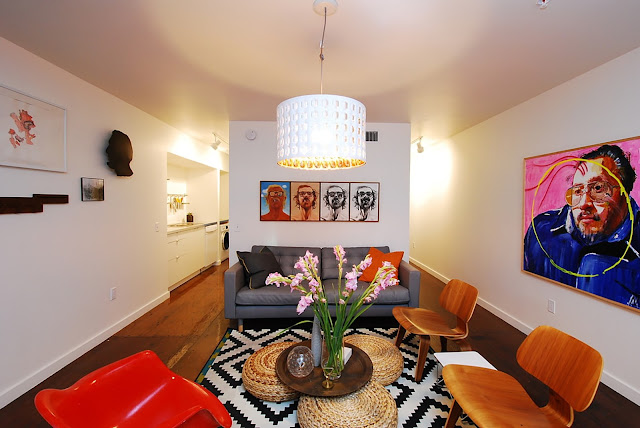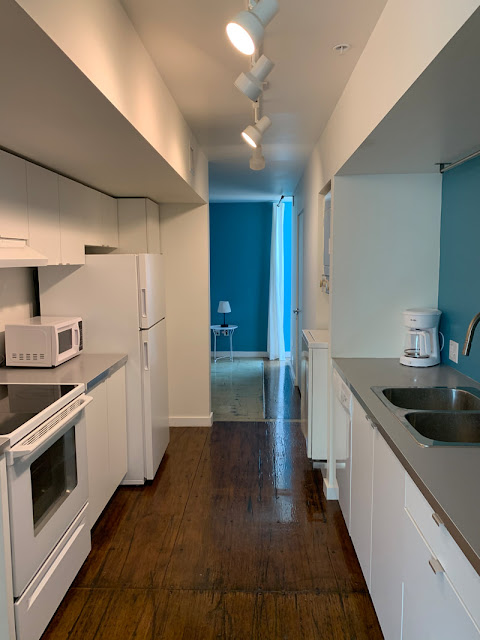| Project | The Wyss Family Container House |
| Architects | Paul Michael Davis, Tiffany Chow - Paul Michael Davis Architects |
| Structural Engineer | Mark Leingang - TransOlympic Engineering |
| Civil Engineer | Mark Leingang - TransOlympic Engineering |
| Builder | Dick McDonald, Roger Reynolds - Karlstrom Associates |
| Area | 3200 SF |
| Year | 2019 |
| Location | Mercer Island, Seattle, Washington, USA |
| Photography | Mark Woods |
Description by Paul Michael Davis Architects
Our clients, a young family of 5, approached us asking us to style something bold, unusual, and adventurous. Additionally, it had to feature space for his or her growing, rambunctious kids, also as bring their 1960s home into the 21st century. and that they really loved the thought of re-purposing shipping containers.
After analyzing the house and therefore the way the clients lived in it, we proposed a series of minimalist metal boxes to exchange their existing, poorly constructed garage. In it’s place, we designed a multi-level space with a replacement garage, a guest bedroom, and two multi-purpose spaces which might be employed by adults and youngsters alike for a spread of things over the years. Within this stacked volume, we stacked two recycled shipping containers and put the more private, messy rooms like bathrooms and a laundry room inside.
Our budget didn’t leave an entire renovation of the prevailing house, so we decided to let the prevailing house remain mostly as-is, and juxtapose it with a strongly contrasting, minimal addition.
Scope:
Garage and recreation room addition and extensive remodel of a 1950s house on a wooded suburban site on Mercer Island’s side . The project includes the incorporation of two repurposed shipping containers.
Description by dwell
Part of a new addition, the containers divide the interior spaces and nod to the family’s love of contemporary art. Growing up in Basel, Switzerland, Balthasar Wyss was fascinated by two things: the city’s famous contemporary art scene and the boats in the local harbor. It was this fascination that inspired him to incorporate shipping containers into the 1950's split level home that he and his wife, Steph, share in Mercer Island, Washington.
Balthasar and Steph had been living in the house with their three boys for some time, and it was starting to feel cramped and dated. A renovation was in order. For that, they turned to Seattle architect Paul Michael Davis.
"Balthasar loves shipping containers simply as objects, but also as symbols of global trade," says Davis. "Conversations about contemporary art led to our decision to treat the containers more like art pieces than structural armatures."
"Shipping containers are just beautifully designed," says Balthasar. "Some people find them ugly but I find them beautiful, simple, and purposeful. They also represent international trade and cultural exchange."
"The original split level house didn’t have much to distinguish it from the thousands of others like it in the area, and it had been partially remodeled over the decades in a way that further confused its identity," says Davis. "In addition to giving the boys more room to run around and jump off of things, the new addition gives them a place to drop off sports and outdoor equipment as well as a space to gather and hang out with a direct connection to their backyard."
It was important to the clients that the renovated home would fit into the style of the existing neighborhood, while incorporating new, contemporary elements. It was also essential to create a good flow throughout the home, with both communal gathering areas and areas for quiet contemplation.
"Many buildings that incorporate shipping containers treat them as a sort of modular building block," says Davis. "We knew from the beginning that a stack of shipping containers attached to a 1950s split level was the wrong response." Instead, it was decided to treat the shipping containers in a more artful way as found objects.
While they initially considered painting the containers in bright colors—such as orange to match the exterior doors—they eventually decided to leave them unaltered with the markings and transportation graphics becoming a defining element of the interior.
The original home was an "L" shape, and the new addition has transformed it into a "U" shape, creating an informal entry courtyard. This new, bar-shaped addition contains a garage, mud room, bathroom, and family room, alongside a gasket-like circulation bar between old and new. It also enlarges the existing dining room. The rest of the plan in the existing home remains largely unchanged. "The program of the addition wasn’t one of formal or entertaining spaces," says Davis. "It was really about adding functionality to the Wyss’s daily lives."
There are two entries to the home: one through the front door, which leads to the circulation space, and another through the garage that opens directly into the shipping container. "The proportions of the container lend themselves to a small bathroom, laundry, and space for the family to drop off their backpacks and sports equipment, and take off their shoes," explains Davis. "The enclosed nature of the container also lends itself to hiding these service spaces from view."
The shipping container opens into the circulation space between the old house and the new addition, which is adjacent to a large, open family room. "This space is a simple, tall volume—a container for the container," says Davis. It opens up onto the terraced backyard decks, at the end of which is a second shipping container that is used as a multi-purpose studio.
While the project was built during a period of unprecedented escalation in construction costs in the Seattle area, the shipping containers themselves were very inexpensive. The container yard did most of the modifications. The final cost for modifications and delivery was less than $15,000. Further budget was saved by avoiding complex detailing in the addition in favor of a neutral white space that provides a gallery-like backdrop for the shipping containers.
"The conventional, ‘every-house’ quality of the existing structure made it hard to have a dialogue between old and new," says Davis. "It was sort of like trying to make a side dish from scratch to go with a Big Mac. But settling on the ‘container within a container’ resolved this. Once we let the overall form of our building be a simple form—a rectangular bar with a shed roof sloping toward the entry courtyard—we were free to create a rich experience inside."
It's a rich experience that is now enjoyed by the entire family. "We spend most of our time in the new space," says Balthasar. "The open space which extends easily to the decks and backyard brings our family and the property together".
With the shipping container door separating the existing home and the addition open, there is a clear flow between the new family room and the kitchen and dining area. With the shipping container door closed, however, the space is divided into two more private spaces.
"We really wanted the rest of the house to be quiet in order to showcase the shipping containers as art objects," says Davis. "So, we used a very simple materials palette: lots of big windows and doors to bring in light and open up to the yards; heated concrete floors, polished to reveal the aggregate; basic IKEA cabinets; sheetrock painted a gallery-like white; and some touches of light, natural wood to add warmth and texture."
A sliding door crafted from part of a shipping container, with the typography becoming a graphic and defining element within the space.
When open, the door leads into the dining room, which has been extended to create a communal gathering space for the family.
The small bathroom inside the shipping container at the entrance. The inside walls have been painted white to create a sleek, minimal appearance.
The mud room in the shipping container offers plenty of space for the family to remove shoes and store sports equipment.
"I love the heavy weight of the dark grey container in the bright, white space," says the architect.
"One of Steph’s goals for the project was to connect the interior to the backyard, both visually, and functionally—she is an avid grill master," says Davis. The grill and a fire pit are centerpieces the family uses regularly.
The second shipping container in the garden is a multipurpose space. In the planting season, for example, it acts as a greenhouse. The family also intends to use it as a creative art/welding studio as the children get older.
Floor plans
About Paul Michael Davis Architects
We are an internationally recognized design firm established in 2010. Based in Seattle, PMDA focuses on Residential, Commercial, and Institutional projects. We focus equally on our clients, and formal innovation. Our work has been featured in Dwell, Design Milk, Dezeen, The Seattle Times, Archinect, Gray Magazine, and various other publications.
Architect Paul Michael Davis and his team believe good design is rooted in problem solving. Every client and each vacant lot is exclusive . Every building happens during a specific time and culture. Addressing these influences together as a drag may be a thanks to create better places to measure , work, and play. Solving the issues of today creates an authentic architecture which will last for generations.
Our clients are what makes us special. they're honest and pragmatic, but adventurous. they need to try to to something new and inventive, but respect the context around them. they need to try to to something that advances society for the higher , even it's during a really small way.
We are excellent at listening at PMDA—nearly every client tells us this. We are great at taking a client’s needs and hopes and translating them into something innovative that they never would have imagined. we would like to push design forward.
Paul Michael Davis and his team have quite 20 years of experience within the field of architecture. Their deepest experience is in houses and apartments, that they need a deep passion. Their portfolio also includes multifamily residential buildings, libraries, art galleries, cafes, office spaces, and historic preservation.
| Address | 1221 E Pike St #300, Seattle, WA 98122, United States | |
| Phone | +1 206-890-9229 | |
| info@paulmichaeldavis.com | ||
| https://www.instagram.com/paulmikedavis | ||
| Website | https://www.paulmichaeldavis.com/ |
About TransOlympic Engineering
TransOlympic Engineering is a civil and structural engineering firm in Southwest Washington dedicated to serving the needs of clients throughout the region. Areas of practice include structural and civil design of buildings, mills, industrial plants, port facilities, bridges, retaining walls and foundations. We serve the commercial, governmental and residential sectors.
We meet client's needs with efficient, innovative structural engineering and civil engineering services.
Communication is the key to our positive structural engineering and civil engineering outcomes. We strive to be on time and within budget to ensure your project success.
| Address | 2631 12th Ct SW, Olympia, WA 98502, United States | |
| Phone | +1 360-339-5660 | |
| Website | https://transolympic.com/ |
About Karlstrom Associates
Founder Sten Karlstrom began building homes in 1988, and he keeps up to date on all aspects of residential craft. He is a hands-on supervisor who oversees all KA projects, and he will clearly answer all your questions in regard to design, budget and timelines. When a specialty is required, Sten turns to a time-proven network of subcontractors.
Project Manager Andy Houston builds housing structures to the highest values of “accuracy, beauty and longevity.” A master carpenter, Andy prides the KA team on their meticulousness and innovation using locally sourced materials and sustainable methods. He most enjoys “partnering with clients to facilitate a home’s transformation.”
Project Manager Dick McDonald brings nearly 40 years’ experience to the Karlstrom team. He is proud of KA’s ability “to turn a conceptual design into a finished product that fully meets the intent of the design. Smart, sustainable building is always a good thing,” he says. “It lasts longer, requires less maintenance,” and promotes healthier living.
| Address | 9536 49th Ave NE, Seattle, WA 98115, United States | |
| Phone | +1 206-522-5022 | |
| office@karlstromassociates.com | ||
| https://www.instagram.com/karlstromassociates/ | ||
| Website | https://karlstromassociates.com/ |
Shipping Containers Inside Split Level Home, Seattle, Washington
